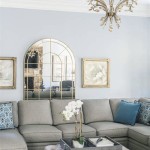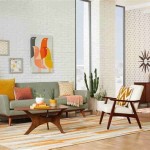Teal Paint Colors for Living Rooms: A Comprehensive Guide
Teal, a captivating color situated between blue and green on the color spectrum, offers a unique blend of tranquility and vibrancy. Its versatility makes it a popular choice for interior design, particularly in living rooms, where its calming yet stimulating presence can foster a welcoming and stylish atmosphere. Selecting the right teal paint color, however, requires careful consideration of various factors, including existing décor, lighting conditions, and desired mood. This guide provides a comprehensive overview of teal paint colors for living rooms, exploring different shades, complementary colors, and design strategies to achieve a harmonious and visually appealing space.
The inherent complexity of teal lies in its nuanced composition. The precise ratio of blue to green determines its overall character, ranging from deep, saturated teals that exude drama and sophistication to lighter, more airy teals that evoke a sense of serenity and freshness. Further variations arise from subtle undertones of gray, yellow, or even brown, influencing how the color interacts with light and other hues within the room. Consequently, it is crucial to understand the specific characteristics of each teal shade before committing to a particular paint color for the living room.
Understanding Teal Undertones and Saturation
The influence of undertones on teal paint colors is significant. Teal with gray undertones tends to appear more muted and sophisticated, lending itself well to formal living rooms or spaces where a sense of understated elegance is desired. Conversely, teal with yellow undertones will exhibit greater warmth and vibrancy, making it suitable for creating a welcoming and energetic atmosphere. Brown undertones can add depth and richness, imparting a sense of earthiness and comfort. It's essential to test paint samples under different lighting conditions within the living room to accurately assess the impact of these undertones.
Saturation refers to the intensity of the color. Highly saturated teals are bold and attention-grabbing, ideal for creating focal points or adding a touch of drama to a neutral space. Less saturated teals, on the other hand, are more subtle and versatile, serving as a calming backdrop that complements a wider range of furniture and accessories. When choosing a teal paint color, consider the overall desired effect and select a saturation level that aligns with the intended mood and style of the living room.
Furthermore, the texture of the paint finish can also impact the perceived color. Matte finishes absorb light, resulting in a softer, more muted appearance, while glossier finishes reflect light, enhancing the vibrancy and intensity of the teal shade. Flat or matte paints are practical for hiding imperfections on walls, while eggshell or satin finishes offer greater durability and cleanability, making them suitable for high-traffic areas. The choice of paint finish should be carefully considered based on both aesthetic preferences and practical needs.
Complementary Color Palettes for Teal Living Rooms
Teal, while a striking color on its own, truly shines when paired with complementary hues. The right color palette can enhance its beauty, balance its intensity, and create a cohesive and visually appealing living room. Several color families work exceptionally well with teal, offering a range of possibilities to suit different tastes and styles.
White and Neutrals: Crisp white trim and ceilings provide a clean and sophisticated contrast to teal walls, allowing the color to stand out without feeling overwhelming. Neutral shades such as beige, gray, and cream offer a more subtle backdrop, creating a calming and balanced atmosphere. These neutral tones can be incorporated through furniture, rugs, and accessories, providing a versatile foundation for showcasing teal accents.
Gold and Brass Tones: The warm metallic sheen of gold and brass complements the coolness of teal, adding a touch of luxury and sophistication. Incorporating gold or brass accents through light fixtures, picture frames, or decorative objects can create a visually appealing contrast and elevate the overall aesthetic of the living room. The juxtaposition of cool teal and warm metallics creates a balanced and inviting space.
Coral and Peach: For a more vibrant and playful palette, consider pairing teal with coral or peach. These warm, inviting hues create a cheerful contrast to the coolness of teal, resulting in a dynamic and energetic space. This combination works particularly well in coastal or bohemian-inspired living rooms, where a sense of warmth and vibrancy is desired. Use these colors as accents in pillows, throws, or artwork.
Mustard Yellow: Mustard yellow offers a more grounded and earthy complement to teal. This combination creates a sophisticated and visually interesting contrast, particularly when used in a mid-century modern or eclectic setting. Mustard yellow can be incorporated through furniture upholstery, rugs, or decorative accessories, adding a touch of warmth and personality to the teal-dominated space.
Other Shades of Blue and Green: For a monochromatic or analogous color scheme, consider pairing teal with other shades of blue and green. This creates a harmonious and calming effect, particularly when using varying tones and textures. Lighter shades of blue can create a sense of airiness and spaciousness, while deeper shades of green can add depth and richness.
Design Strategies for Incorporating Teal in Living Rooms
Successfully incorporating teal into a living room requires careful planning and execution. Consider the room's size, natural light, and existing décor when making design choices. Here are some strategies to help you achieve a harmonious and visually appealing teal living room:
Accent Wall: Painting a single wall teal can create a focal point and add a pop of color without overwhelming the space. Choose a wall that is naturally prominent, such as the wall behind the sofa or fireplace. This allows teal to serve as a visually engaging element without dominating the entire room. The remaining walls can be painted in a neutral color to balance the intensity of the teal accent wall.
Furniture and Accessories: Instead of painting the entire room teal, consider incorporating the color through furniture and accessories. A teal sofa, armchair, or rug can add a touch of vibrancy and personality to a neutral space. Teal throw pillows, curtains, or artwork can also be used to introduce the color in a subtle and sophisticated way. This approach allows for greater flexibility and experimentation, as these elements can be easily changed or updated.
Textural Elements: Incorporate a variety of textures to add depth and visual interest to the teal living room. Combine smooth surfaces like painted walls and glass tables with rougher textures like woven rugs, knitted throws, and upholstered furniture. This creates a more dynamic and engaging space, preventing the teal from feeling flat or monotonous. Different textures can also enhance the perceived color of the teal, adding subtle variations and nuances.
Lighting: Proper lighting is crucial for showcasing teal paint colors effectively. Natural light enhances the vibrancy and depth of teal, while artificial light can alter its appearance. Use a combination of ambient, task, and accent lighting to create a well-lit and visually appealing living room. Consider using warm-toned light bulbs to complement the coolness of teal and create a more inviting atmosphere. Dimmers allow for adjusting the light level and creating different moods within the space.
Balancing Warm and Cool Tones: Teal, being a cool color, benefits from the addition of warm tones to create a balanced and inviting space. Incorporate warm wood tones through furniture, flooring, or decorative objects. Introducing metallic accents in gold, brass, or copper can also add warmth and sophistication. This balance prevents the teal from feeling too cold or sterile, creating a more comfortable and welcoming environment.
Reflect Natural Surroundings: Selecting the perfect shade of teal can be inspired by external environments. For a coastal aesthetic, opt for lighter, more muted teals that mimic the colors of the ocean and sky. For a more earthy and grounded feel, choose deeper teals with brown undertones that reflect the colors of nature. Aligning the teal color with the surrounding environment can create a cohesive and harmonious living space.
In conclusion, teal paint colors offer a versatile and captivating option for living rooms. Understanding the nuances of undertones, saturation, and complementary color palettes is crucial for achieving a harmonious and visually appealing space. By carefully considering these factors and implementing effective design strategies, homeowners can transform their living rooms into stylish and inviting havens with the timeless beauty of teal.
:strip_icc()/102708612-81d8438ee16f4798807df73b1f4e4814.jpg?strip=all)
Teal Blue Paint Colors

Behr Premium Plus 5 Gal P470 7 The Real Teal Flat Low Odor Interior Paint Primer 130005 Home

A Bohemian Life Teal Living Rooms Bedroom Seating Area Paint Colors For Room
:strip_icc()/102028174-fa86ea5bc9d64877a21038fdfa35d94c.jpg?strip=all)
Teal Blue Paint Colors

Glidden Essentials 1 Gal Teal Bayou Ppg1147 5 Flat Interior Paint 5e 01f The Home

The 10 Best Teal Paint Colors And How To Use Them

Teal Paint Colours For Your Home Design Cafe

My New House Update And A Plea For Help Living Room Wall Color Teal Rooms Colors

Teal Paint Colours For Your Home Design Cafe

What Is A Good Neutral Paint Color That Complements Teal Accent Wall








